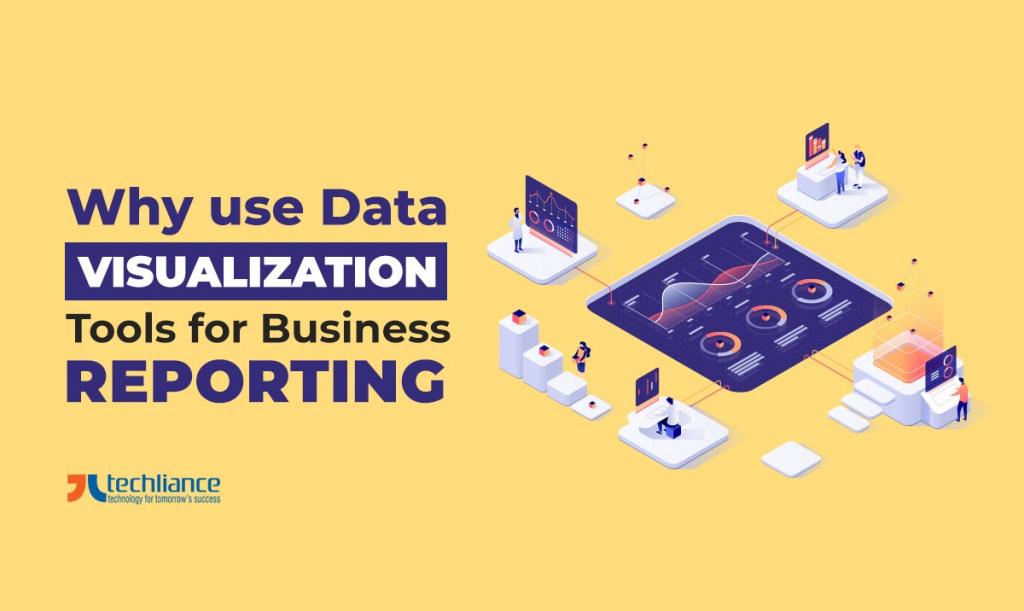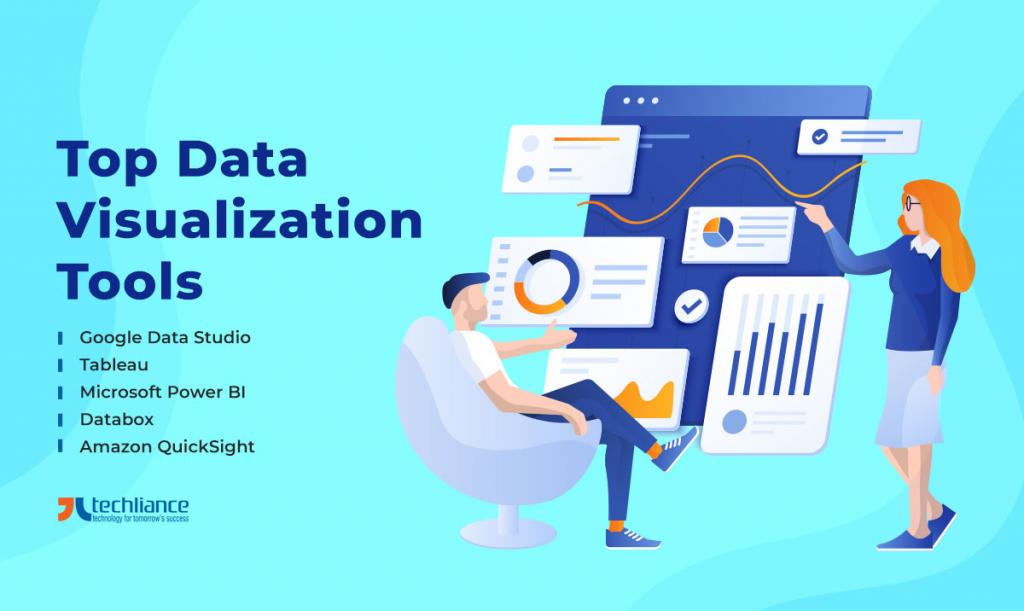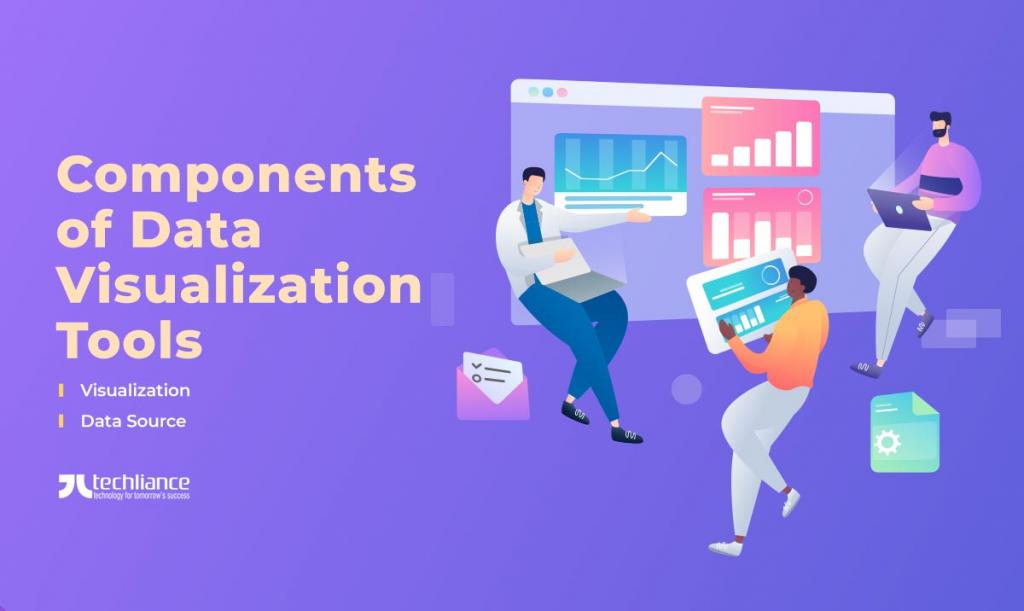Remember that humans are visual creatures. Large sets of texts feel cumbersome when it comes to showcasing marketing, sales, revenue, and business growth. So, we can use data visualization tools for business reports to make them more understandable in 2024.
Words and numbers are somewhat abstract notions. So, it takes much effort to learn them. While the human mind can easily comprehend color, form, and shapes.
To a large extent, it counts as to why you can easily identify trends and patterns with visual tools. But that’s quite challenging to pinpoint data that are represented on a table. Yes, even if you mine data using reliable survey techniques.
By now, you probably know that data is of no good if you cannot visualize it. To get the most out of your data, you’ve got to represent it using compelling visuals. First-of-all, you’ve got to know about various data visualization tools and their elements for more comprehension.

Choose from the top Data Visualization Tools
Today, numerous data visualization tools are available. The majority of these are either free or provide a free trial. You can test them, and select the best to visualize the performance of the online business during 2024.
- Google Data Studio
- Tableau
- Microsoft Power BI
- Databox
- Amazon QuickSight

Components of Data Visualization Tools
Many data visualization tools comprise two vital components — the visualization and data source. A file like an Excel worksheet or a .csv file can serve as the data source. Also, it can be a connection through a server. Data visualization tools typically support integration with various analytical tools.
Firstly, you have to import your data into a visualization tool. Then you start the process of creating stunning dashboards and marketing/sales reports. A report contains charts and other elements like text and images.
If you’re not a newbie in the industry, then you are aware of this fact. Normally, various kinds of visuals are readily available in most visualization tools. For example, bar charts, scatter plots, Likert scale, data flow charts, tables, geo maps, pie charts, etc.
After creating your report, you’ve got to upload it to a server. This way, it becomes readily accessible to everyone in your organization. Here comes another question. How can you connect data to a visualization tool?

Connecting data to Visualization Tools
Let’s say you’re using a data visualization tool like Google Data Studio. You will likely see options like Google Ads, Google Analytics, Google Clouds Storage, and Google Sheets to connect to. To import files, it would be best if you use ETL or other tools with automatic integration like Improvado.
Such tools help you to connect to Google Data Studio and other visualization tools without losing sweat. This way, you get to save more time as all your marketing data has been connected to the ETL tool. The next step is to define your goals and identify your target audience before making dashboards.
Goal: Arm your digital products with business intelligence now
Outlining audience and goals before creating dashboards
A good dashboard should help your marketing team make informed decisions. Before building a dashboard, you’ve got to figure out what various stakeholders want. Moreover, you must know what their day-to-day schedules look like.
For instance, the chief marketing officer and CXOs are more interested in the big picture. That is the overall marketing return on investment (ROI), and the performance of each marketing channel. This way, they get to make more informed decisions when it comes to allocating their budget.
Furthermore, performance marketers have more interest in the nitty-gritty that goes into the campaign. That is the ad level data, and other vital metrics like conversion rate, clickthrough rate, and the cost per impression. It will help them optimize their campaign, and figure out what’s working.
You can properly identify what the team (or stakeholder) is looking for. So, you will comfortably showcase the metric that they are more interested in. Moving on, here’s how to make dashboards utilizing a visualization tool.
Tip: Value of dashboards for eCommerce businesses
Using Data Visualization Tools to make Dashboards
First off, you have got to select a data source. You can link the data source via a data pipeline, a connector, or a file. Let’s say you’re using Google Data Studio as your visualization tool.
Use a piece of paper to outline your idea, and get a feel of how it would look after creation. Now, you can start creating your ideal chart. It could be the timeline of your daily revenue or other metrics you would want to measure.
The timeline pretty much helps your team to keep a close eye on your sales. Likewise, you need to choose the right dimensions and metrics for your chart. You can take it a step further by adding more dimensions to help you break down the chart.
To do that, add the revenue generated by each marketing channel, and how it contributes to the final result. Any extra chart added has to offer more value to your team. Titles play a vital role in building easily understandable dashboards for eCommerce and other businesses universally.
By using clear, explanatory titles on each chart, your audience will easily digest what’s on your dashboard. Simply put, titles help the average person to understand what’s on your data visuals without many explanations. That’s not all. You can take an extra step by adding filters and selectors to the mix.
These features help in the easy breakdown of the dashboard. Furthermore, it helps in narrowing down to a specific view. The styling for the dashboard has to be consistent.
Therefore, it becomes easy to read. Find ways of adding spice to the design of your dashboard. One tactic is to use the color scheme of your company.

Wrap Up
Business reporting is all about representing marketing or sales data in a digestible format. For the data to be consumable, it has to be visualized. That’s where data visualization tools come into play.
At the start, you must define your goals — what’s your primary objective, and what do you want to achieve? Next, you’ve got to identify who your target audience is. Moving on, building a compelling dashboard is one of the sure ways of getting your data across to your audience.
If you’re in doubt of how to mine data using reliable strategies, then you can pick the data visualization techniques. Now, you understand how to use data visualization tools for your performance reports. So, you can represent metrics like key performance indicators (KPIs) in a better manner in your marketing report.
You’ve got to share the dashboard with everyone in the organization. For this purpose, you must generate a link on the server. Then, you can share the link with your preferred users.




